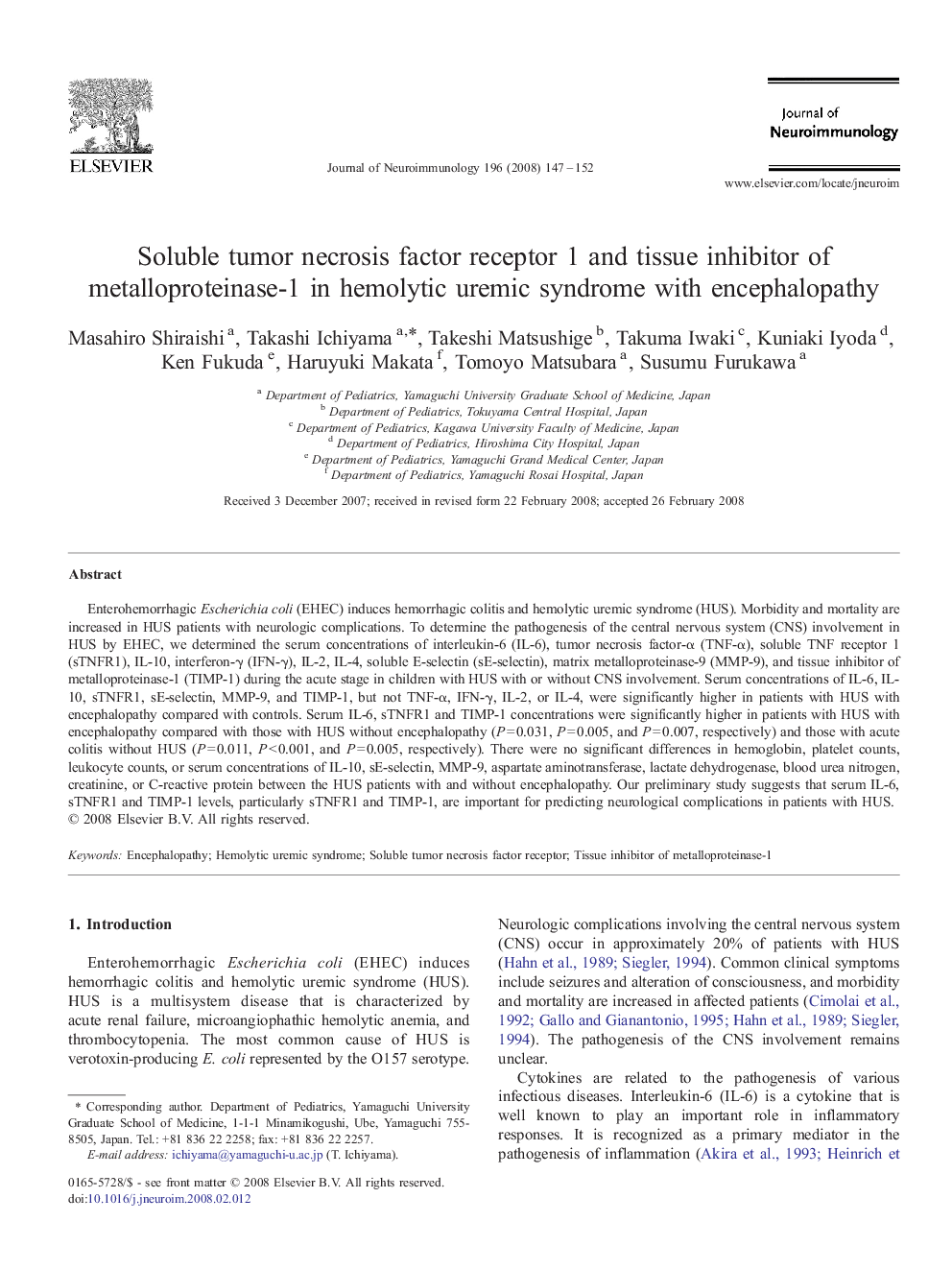| Article ID | Journal | Published Year | Pages | File Type |
|---|---|---|---|---|
| 3065417 | Journal of Neuroimmunology | 2008 | 6 Pages |
Enterohemorrhagic Escherichia coli (EHEC) induces hemorrhagic colitis and hemolytic uremic syndrome (HUS). Morbidity and mortality are increased in HUS patients with neurologic complications. To determine the pathogenesis of the central nervous system (CNS) involvement in HUS by EHEC, we determined the serum concentrations of interleukin-6 (IL-6), tumor necrosis factor-α (TNF-α), soluble TNF receptor 1 (sTNFR1), IL-10, interferon-γ (IFN-γ), IL-2, IL-4, soluble E-selectin (sE-selectin), matrix metalloproteinase-9 (MMP-9), and tissue inhibitor of metalloproteinase-1 (TIMP-1) during the acute stage in children with HUS with or without CNS involvement. Serum concentrations of IL-6, IL-10, sTNFR1, sE-selectin, MMP-9, and TIMP-1, but not TNF-α, IFN-γ, IL-2, or IL-4, were significantly higher in patients with HUS with encephalopathy compared with controls. Serum IL-6, sTNFR1 and TIMP-1 concentrations were significantly higher in patients with HUS with encephalopathy compared with those with HUS without encephalopathy (P = 0.031, P = 0.005, and P = 0.007, respectively) and those with acute colitis without HUS (P = 0.011, P < 0.001, and P = 0.005, respectively). There were no significant differences in hemoglobin, platelet counts, leukocyte counts, or serum concentrations of IL-10, sE-selectin, MMP-9, aspartate aminotransferase, lactate dehydrogenase, blood urea nitrogen, creatinine, or C-reactive protein between the HUS patients with and without encephalopathy. Our preliminary study suggests that serum IL-6, sTNFR1 and TIMP-1 levels, particularly sTNFR1 and TIMP-1, are important for predicting neurological complications in patients with HUS.
